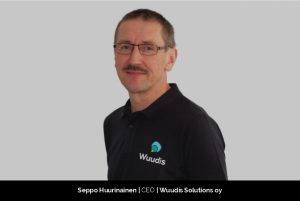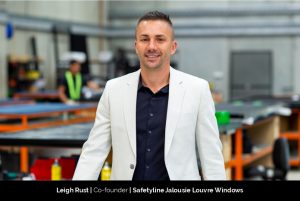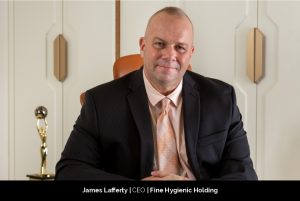Dr. Tigran Haas: Revamping the Paradigm in Urban Planning and Design with His Expertise
The 10 Most Revolutionary Business Leaders Overcoming the Pandemic

Truly great leaders know that the strength of their
leadership is built on their ability to adapt to suddenly changing
circumstances and to know how and when to seize on opportunities amid a
changing landscape. Dr. Tigran, Associate Professor, Director, Architect, Urban
Designer, and Director of Centre for the Future of Places (CFP) at KTH Royal
Institute of Technology, adds, “We need to be effective at networking, not just
to advance our own careers, but for the benefit of our organization.”
Mastering and anticipating the problems as they arise, and
solving them immediately, often doing it with out-of-the-box thinking, using
intuition, fast decision making, improvisation, and decisive time measures, are
some of the key elements of a good leader. He states, “I see success and the
road to a top research environment through lenses of the project and strategic
management with key elements of successful teamwork and exceptional leadership.
Team building, promoting teamwork as well as fostering creativity and
innovation are crucial for me.”
Exceptional leaders have the ability to look into their
organization’s future and make clear, concrete goals that will benefit their work.
One of the top elements in that is the triangle of managing complexity, acting
strategically, and being an effective communicator.
Journey to success
While growing up, Dr. Tigran always wanted to become
renowned in architecture and make a high impact in the domain. Both his parents
had respectable jobs and had a strong academic background which, in some way,
structured his way for the future.
Dr. Tigran studied Architecture from 1996-1987 as a Guest
Student at the Massachusetts Institute of Technology. The next year he
completed his Graduate Diploma in International Space University from the same
university.
Then he went on to complete his Bachelor of Architecture
(B.Arch.) in Architecture, Urban Planning and Design with summa cum laude from
the University of Sarajevo, Former Yugoslavia, School of Architecture and
Urbanism. After this, he grabbed his Master of Architecture in Architecture and
Urbanism with magna cum laude from the University of Zagreb.
In 1997, he completed his Master of Science (M.Sc.) in
Environmental Science with cum laude from the KTH-Royal Institute of
Technology.
In 2004, he went on to complete his Ph.D. in City/Urban,
Community, and Regional Planning from the same institute.
Then he completed his Post Doc Studies in Urban Design, Planning
and IT and Urbanism from the Massachusetts Institute of Technology, UC
Berkeley, and University of Michigan Ann Arbor.
In 1997, he joined KTH-Royal Institute of Technology when he
completed his Master’s degree as Associate Professor and became Director,
Architect, and Urban Designer.
From 2005 to 2007, he was a visiting professor at the Zagreb
School of Economics and Management.
In 2016, he took the onus of the Director of the Centre for
the Future of Places. He adds, “The Centre for The Future of Places (Centrum
för framtida stadsrum) (CFP) aims to establish and promote sustainable urban
development by shifting the urban discourse from the hardware of cities
(buildings and infrastructure), to the software of the cities (culture and
place), in order to promote healthy and livable cities. The goal is to
establish an internationally acknowledged research hub around the concept of
public space within the disciplines of Urban Planning and Urban Design, where
the strength is research and development of an international and inter and
multidisciplinary network, transmuting the theory and practice of
city-building.”
In 2019, he took the responsibilities of Guest Scholar at
LCAU (SA+P MIT) and is still handling it part-time. As a leader for the future
generation, he is involved in three major research projects, one on Urban Form
and Human Behavior and the other one on Authenticity – Contextual Cities and
third on Synchronicity, as well as coordinating five research projects in the
Centre for the Future of Places. He teaches three graduate courses (MSc), two
post-graduate courses (Ph.D.), currently supervises 5 Ph.D. Students (As main
and co-supervisor; total Ph.D. 18 students), as well as 5 Masters of Science
Students (total 65 MSc. Students). Also, currently with Doctoral Fellow Ms.
Jing Jing, Dr. Tigran is involved in a research project on urban loneliness,
happy and healthy cities.
Moreover, he is working on five new books for 2020, 2022,
and 2022/23 (Atheneum Scholars Press, Rowman & Littlefield, Routledge, Rizzoli,
Gondolier/Sustasis Press, and Edwar Elgar).
Working at KTH Royal Institute of Technology to redefine
urban architecture
Since its founding in 1827, the KTH-Royal Institute of
Technology in Stockholm has grown to become one of Europe’s leading technical
and engineering universities, as well as a key center of intellectual talent
and innovation. They are Sweden’s largest technical research and learning
institution and home to students, researchers, and faculty from around the
world dedicated to advancing knowledge.
KTH is working with industry and society in the pursuit of
sustainable solutions to some of humanity’s greatest challenges: climate
change, future energy supply, urbanization, and quality of life for the
rapidly-growing elderly population. KTH is addressing these with world-leading,
high-impact research and education in natural sciences and all branches of
engineering, as well as in architecture, industrial management, urban planning,
history, and philosophy.
Being an Associate Professor, Director, Architect, and Urban
Designer at the institute, he is leading the Centre for the Future of Places to
promote sustainable urban development.
The Centre for the Future of Places has been established to
promote sustainable urban development by shifting the urban discourse from
objects to places in order to promote healthy and livable cities within the
disciplines of Urban Planning and Urban Design.
His expertise, current research, and teaching focus on
contemporary trends and paradigms in urban planning & design, new urbanism,
sustainable urbanism, social housing, and urban transformations, and city
development, aging society, design, and medialization of urban form.
He adds, “We envision a networked community of leaders
actively working across sectors, frontiers, and disciplines to build a more
just, sustainable, and prosperous world. The task of the Centre is to take a
holistic approach in defining, classifying, and establishing the public space
as an independent academic research field. This means that the center will
systematically link together knowledge from all disciplines related to the
field of public space, such as urban planning, urban design, environmental
psychology, urban sociology, architecture, urban economics, human geography,
and others.”
The focus on public space will serve as a cross-disciplinary
framework to merge the knowledge from the different disciplinary silos,
creating links between the experts within them to create a holistic
understanding of the city that serves as the basis for practical and effective
action will require extensive international cooperation.
The Centre for The Future of Places is committed to
achieving this goal through collaborative interdisciplinary research projects,
leadership forums, and conferences, publications, and an important presence at
national and international gatherings where new ideas in urbanism are the
focus.
Tackling the pandemic with new strategies
Universities and college campuses such as KTH-Royal
Institute of Technology and MIT are places where students study, socialize, and
live in close proximity to each other. These campuses are also the nexus for
social and cultural hubs where students are brought together from all corners
of the world where social and human capital is produced. Due to the rapid
spread of the coronavirus and the unprecedented impact it has had on society,
they had to adapt to teaching, research, and networking online and, most
importantly, to do everything they can to protect the lives of their students
and faculty.
One has to provide students with an easily accessible online
version of their courses. Universities are better placed in a network society
in this new digital age. If for nothing, this pandemic has taught everyone to
be localized, less wasteful, more attuned to ecological footprint, comradeship,
and the importance of micro-scale.
Dr. Tigran adds, “We will see a permanent condition of
Hybrid Teaching and Research in the future as well as major changes in office
environments; travel less, balance home, and work more.”
Maximizing online learning and teaching, developing robust
but flexible systems, gathering information, and applying the best practices
have been some of the hallmarks of this difficult period, as well as great
collegial and comradeship throughout the days. The higher education sector has
withstood pandemics and turbulent economic times in the past, and it will
withstand them again, preparing to be adaptable, resilient, and sustainable in
the long run.
Also, the new ideas for cities of the future in terms of
density and spread of people and infrastructure, new office environments, and
new public places are going to be omnipresent in any future planning and
development processes. New theories, new data, new approaches — all of that is
necessary in order to produce new resilient and just technological
environments.
Overcoming the impediments on the way
Like every successful leader, Dr. Tigran also faced a
plethora of impediments on his voyage to achieve success. However, he faced all
of them boldly and progressed ahead to reach his goals.
He classifies the challenges faced in three categories, the
micro, meso, and macro scales. Explaining each of them individually, he states,
“Micro is the immediate one with all the challenges of competences, staff,
tasks, immediate decisions, administration, and leadership as well as conflicts;
the meso is the plane of projects and partnerships and cases on the ground and
the cities where the work is being done but also the products, the media, networks,
etc. and finally the macro with all the challenges and competition and major
issues on the regional national and global level that influence the work and
strategy of the place where one works.”
He believes he faced numerous roadblocks. However,
there were many valuable lessons learned along the way. One of the main points
that he highlights is that every challenge can be solved with the help of a
tight organization that stands on good leadership and proper delegation of
responsibilities so that everyone can work together to achieve the shared goal
along with individual growth.
Striving for a Work-life balance
Balancing the personal and professional life is the key to
undergo smart multitasking and engage in healthy home life. He says, “Different
studies show that 71 percent of CEOs or directors/bosses get over six hours of
sleep at night, and 60 percent exercise multiple times a week.”
Since stress increases with the responsibilities of
networking, giving presentations, speaking at events, and managing an
incredibly busy workday, it is extremely critical to keep it under check or at
least balanced to avoid complications. For that, meditation, ambient music,
good wine, reading books, using the free-flowing imagination, enjoying good
hobbies, getting in touch with mother earth, and establishing good
companionship by building social capital outside work are some of the
beneficial ways to keep stress at bay.
Bright Future plans
Adhering to the 5Ps (Passion, Perseverance, Professionalism,
Persuasion, and Playfulness) motto in life, Dr. Tigran considers himself as an
amalgamation of different “persons of bits,” namely, Walter Mitty, Peter Pan,
George Clooney, Richard Florida, Steve Jobs, Martin Luther King, Mother Teresa,
and Oprah Winfrey.
With a challenge-loving approach, he is up for handling
numerous jobs at one time including, directing a Centre, teaching in a master’s
program, working as a researcher and mentor, and all the rest that goes into
the tenure track at the university, publishing, events, seminars, etc. He aims
to work more with post-doc colleagues and take out more time to write books.
He further adds, “After the center, I am looking forward to forming and leading perhaps a second research lab in my career, A City Research Lab. Cities are amazing places with limitless opportunities, problems, challenges, and sources of ideas. Also, as my friend, George Clooney would say: What else? What else indeed: this is the best job in the world.”














